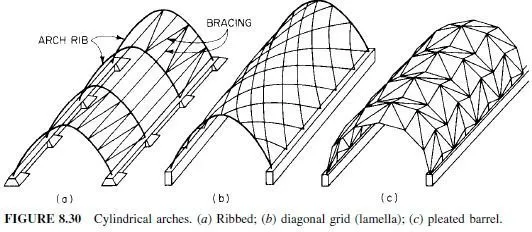Standard Specifications for Highway Bridges, American Association of State Highway and Transportation Engineers (AASHTO), covers ordinary steel bridges, generally with spans less than 500 ft. Specifications of the American Railway Engineering and Maintenance of


Way Association (AREMA) for steel railway bridges apply to spans not exceeding 400 ft. There are no standard American specifications for longer spans than these. AASHTO and AREMA specifications, however, are appropriate for design of local areas of a long-span structure, such as the floor system. A basically new set of specifications must be written for each long-span bridge to incorporate the special features brought about by site conditions, long spans, sometimes large traffic capacities, flexibility, aerodynamic and seismic conditions, special framing, and sophisticated materials and construction processes.
Structural analysis is usually applied to the following loading conditions: dead load, live load, impact, traction and braking, temperature changes, displacement of supports (including settlement), wind (both static and dynamic effects), seismic effects, and combinations of these. Guidelines for loadings on long-span bridges are given in P. G. Buckland, North American and British Long-Span Bridge Loads, Journal of Structural Engineering, vol. 117, no. 10, October 1991, American Society of Civil Engineers (ASCE). Recommendations for stay cables are presented in Recommendations for Stay-Cable Design, Testing and Installation, Committee on Cable-Stayed Bridges, Post-Tensioning Institute. See also Guide for the Design of Cable-Stayed Bridges, ASCE Committee on Cable-Stayed Bridges.




